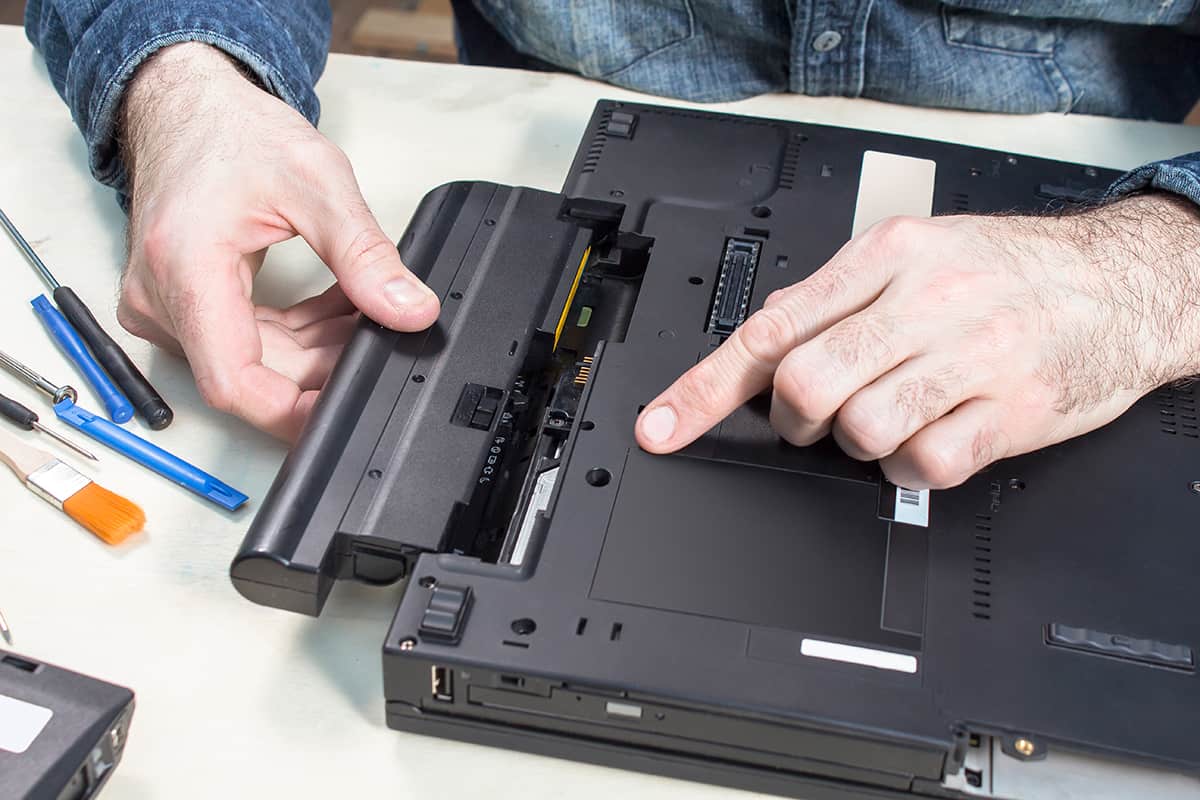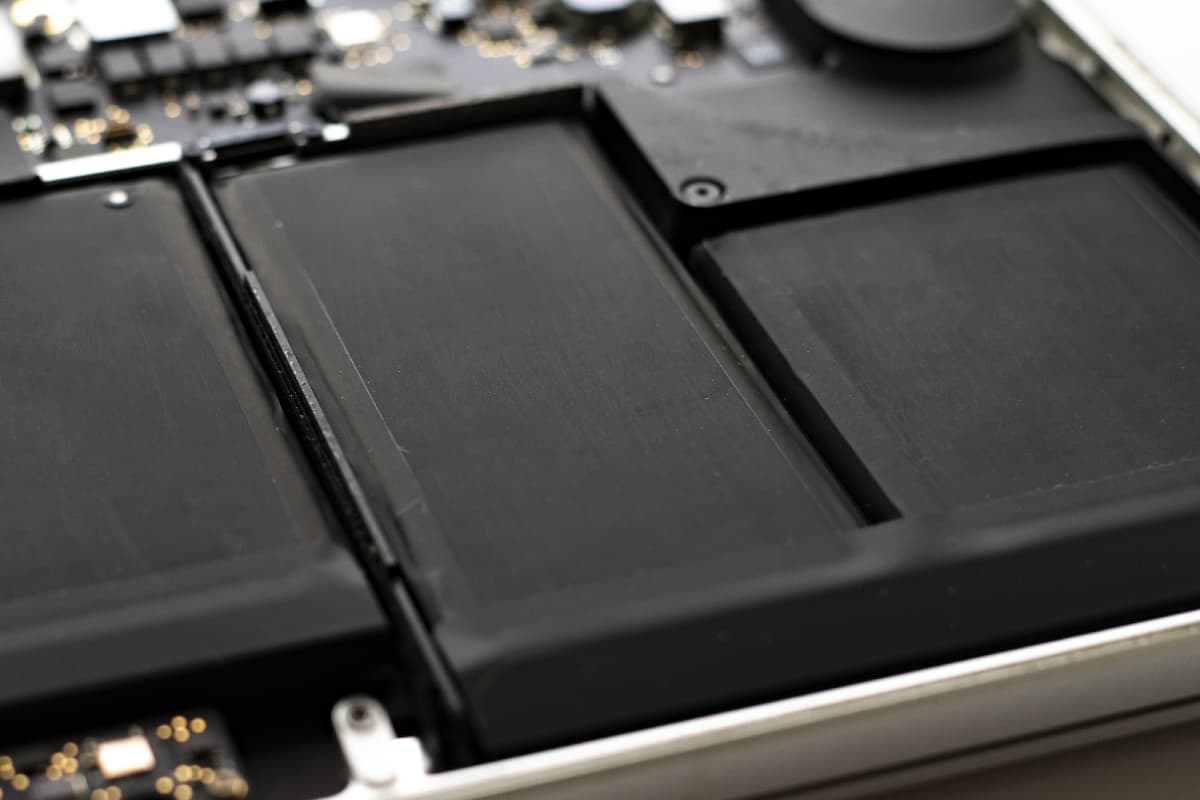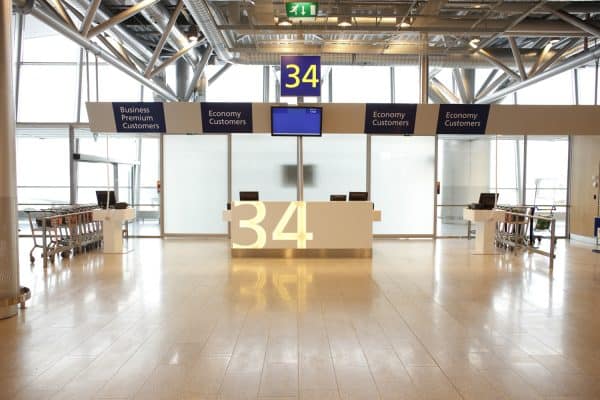With all the news regarding travel bans and inconsistent laptop restrictions, you might be confused about what is permitted and what is prohibited, most especially on the matter of laptop batteries. Worry no more! We have researched all about this topic thoroughly so you can successfully travel.
You can travel with your laptop battery as long as it is within the recommended power rating limit or lithium content. The maximum limit is 100 watt-hours (Wh) or 0.0022 pounds (lb) of equivalent lithium content per battery.
Disregarding laptop restrictions, especially on batteries will probably give you the chance of having problems you didn't anticipate for a flight. So, continue reading to learn more about this matter in detail.
Can You Bring A Laptop On The Plane?
Simply, it is permitted to bring a laptop onto a plane. As usual, you are not permitted to use laptops during takeoff or landing but you are permitted to use them throughout the flight.
In addition, a lot of airlines today provide Wi-Fi that can be purchased as an option, allowing you to access the Internet while traveling. Don't forget that you can now download Netflix content to watch offline, as well as Spotify content to listen to in advance without an Internet connection. You might be able to save money by using this function.
According to the Transportation Security Administration (TSA), you must take your laptop out of your bag before boarding the aircraft and put it in a special bin at the security checkpoint for scanning.
The TSA officers may ask you to open your laptop after it has been scanned by the X-ray machine. In some scenarios, you will ask to turn it on to show the officers that it is a laptop. This is due to heightened security measures.
However, if your laptop is in a "TSA checkpoint friendly" bag, you might not even need to take it out of the bag. Just unzip it, lay it flat, and watch your bag effortlessly through security.
Check here to see this travel laptop backpack, TSA checkpoint-friendly on Amazon.
Can I Travel With A Laptop Battery?
Lithium-ion or Li-ion batteries are used in the majority of your electronic devices. This especially applies to your laptops aside from smartphones, and cameras.
All of the batteries used by the gadgets mentioned above are under 100Wh or 0.0022 lb of equivalent lithium content each which complies with TSA requirements then you can carry them on board.
The Federal Aviation Administration (FAA) has something to say about laptops. They stated that you can only bring extra lithium-ion batteries in carry-on luggage. In other words, you can't bring lithium-ion batteries on the plane with you in your checked luggage because they'll be scanned and maybe even turned away.
You can pack up to two heavier lithium-ion batteries. Each battery weighs more than 0.0022 lb and contains up to 0.0551 lb of equivalent lithium or greater than 100Wh but less than 160Wh in their carry-on.
The majority of laptop lithium-ion batteries are smaller than this rating. Just simply comply and you will avoid the hassle.
How To Determine Power Rating (Wh) Of Your Laptop Lithium-ion Battery?
Nowadays, all new lithium-ion batteries are marked with their watt-hour ratings since it was mandated in 2015. If you do happen to have a laptop battery that was made before the end of 2015, it might only have milliampere-hours (mAh) or ampere-hours (Ah) and voltage (V).
If so, an easy formulation below can be used to determine the battery's Wh rating.
- For mAh: V x (mAh/1000) = Wh
- For Ah: V x Ah = Wh
However, most laptops' batteries today have their power rating clearly in watt-hours (Wh). So, there's no need for you to calculate it. Just like the image of the Toshiba laptop's battery below. As you can see it's rated 44Wh. Which is below the maximum power rating (100 Wh) per battery that is allowed on a plane.
What Exactly Is Lithium-ion Battery?
Lithium-ion and lithium-metal batteries are the two main types of lithium batteries. The primary distinction between the two is that the first is rechargeable, whereas the latter is not.
As lithium-ion is commonly found in laptops, it works differently from lithium-metal. While lithium-metal works irreversibly. The ions flow only in one direction through the battery as it produces electricity, and the electrons move to the circuit as the battery is being used.
However, ions move through the electrolyte fluid from the cathode to the anode when lithium-ion batteries are being charged. When these batteries are in use, a discharge circuit forms between the anode and the cathode. Then, the ions in the anode move to the cathode to provide energy for the equipment.
When using a lithium-ion rechargeable battery, the chemical reaction is reversible. Rechargeable batteries, such as lithium-ion batteries, are an affordable battery option with a long lifespan because the process can be repeated numerous times over a long period.
What Are The Dangers Flying With A Lithium-ion Battery?
When batteries are being charged, lithium-ion battery fires can happen. These fires are self-sustaining and difficult to put out. These batteries may pressurize under a variety of conditions, which makes them dangerous because they contain a flammable electrolyte fluid.
Fires might occur if the lithium-ion battery experiences impact damage, is old and losing quality with age, has unreliable construction been charged, or is kept in extremely cold or hot conditions and overcharged.
Another danger associated with using and recharging lithium-ion batteries is thermal runaway. This happens as a result of thermal or mechanical failures, such as an overcharged, overheated battery, or over-discharged.
When this process takes place, it generates high temperatures that cause the battery cell to undergo an exothermic decomposition, which causes the battery to rupture and cause a thermal explosion.
The FAA doesn't really want you to put your laptop in your checked bag even though it's not prohibited, which is why there is constant discussion about removing laptops from checked bags for security reasons.
Given that lithium batteries pose a fire risk in all devices that use them, it makes sense to pack any such device in carry-on luggage.
Take a look at this video on YouTube where the laptop is on fire. You can see how quickly events got out of hand. Imagine that this occurs inside the aircraft's cargo hold and that no one is present to put out the fire. There might be adverse consequences.
How Do Lithium-ion Batteries Get Detected At The Airport?
Blasting X-rays on the luggage is the best way to find stray lithium-ion batteries. Electromagnetic radiation exposed items of luggage pass through and bounce off different items inside the bag depending on the density of your bag.
Detectors gather these X-rays and produce an image of the contents of the bag from them. Although most airports use some kind of software to facilitate the process, human intervention is still required, which raises the probability of errors.
Smiths Detection, a global provider of X-ray detectors for airports, developed software that claims to significantly reduce the need for human input to help reduce those errors. The company claims that it uses a deep-learning algorithm to raise the detection rate to up to 90%.
Smiths' deep-learning algorithm uses information on the forms, textures, and materials that correctly denote the presence of a lithium-ion battery to refine its approach based on feedback. Considering that it updates itself, it constantly learns and gets better.
Smiths used a sizable database of X-ray images gathered during live operation at a customer site to develop the algorithm. The company then manually classified those pictures as having lithium-ion batteries or not.
How To Pack Your Extra Laptop Batteries?
Contact points are present on every battery. The TSA dislikes it when batteries are placed next to one another and their contact points are in close proximity because they might cause a short circuit and an explosion.
Cover the contact points with electrical tape if you are taking extra batteries. You can put the battery in its original box as well. Typically, products are packaged in boxes with side specs identifying the contents.
Check out this electrical tape on Amazon.
Another option is to place the batteries in plastic zip-lock bags but place them in a separate bag or their own bag.
Check out this plastic zip-lock bag on Amazon.
The TSA is more likely to stop you and check your batteries if you're carrying many of them with you. Therefore, utilize this information to avoid having to figure it out later.
Conclusion
Stressful situations can arise when carrying laptops, especially with batteries. You ought to be able to fly without worrying if you adhere to the general guidelines.
After knowing the fire risk of laptop batteries. Make sure to always pack your laptop and spare batteries properly in your carry-on bag. Make sure they are fully charged, and be ready to take them out as you pass through security.
Remember, you cannot keep lithium-ion batteries (commonly laptop batteries) in checked luggage because they will be scanned and possibly denied boarding. Save yourself from trouble, then abide.
For more plane restrictions, check out the articles below.

![Businessman using laptop on a private jet, Can I Travel With A Laptop Battery? [Carry On Or Checked?]](https://apttraveler.com/wp-content/uploads/2022/08/Can-I-Travel-With-A-Laptop-Battery-Carry-On-Or-Checked-e1662023914916.png)











